#helene mayer
Text
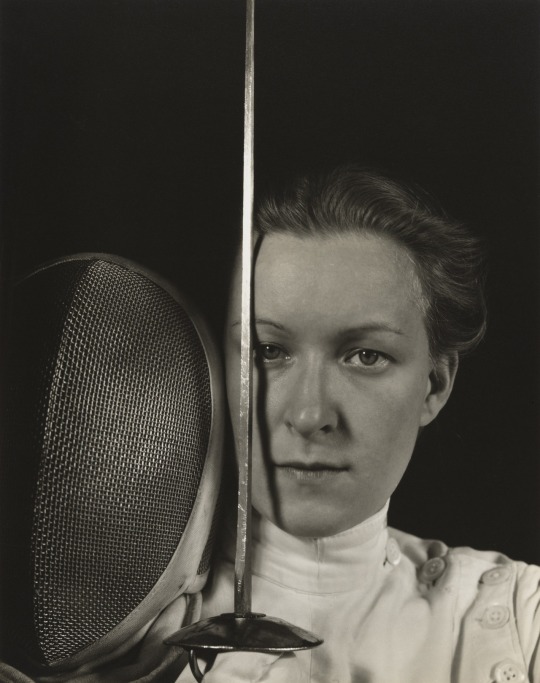
Helene Mayer // by Imogen Cunningham [1936]
crédit photo: The Museum of Modern Art, Midtown Manhattan, New York City.
#Imogen Cunningham#photography#fencing#women's fencing#Helene Mayer#women's sport#portrait#moma#The Museum of Modern Art#1930s
222 notes
·
View notes
Text



Original Art - Lana Turner "Crystal Radek" Costume Sketch (1952)
Art by Helen Rose
The Merry Widow (MGM)
From ha.com...
Vintage original costume sketch accomplished in gouache on artist board measuring 15" x 22.25", featuring Turner in a black satin and lace outfit, looking into a mirror. Signed "Helen Rose" with approval initials at left and notes in pencil and red pencil at upper left. The verso retains stamped production form and approval form.
#Film#The Merry Widow#Lana Turner#Fashion#Helen Rose#Vintage#Art#Illustration#Design#MGM#Metro Goldwyn Mayer#Women Of Film#1952#1950s#50s
41 notes
·
View notes
Text

Dumbo one of the most heartwarming lost media of all time!💜
🐘🐀
#history#dumbo#novel#lost media#helen aberson-mayer#disney history#world war 2#disney movies#dumbo 1941#movie#disney 100#animation#writing history#1940s#disney girl#magic kingdom#walt disney#historical figures#female author#american history#disneyland#disney world#author#animated movies#movie history#nickys facts
9 notes
·
View notes
Quote
Being so densely woven into history like this can have a calcifying effect on a poet and their work, particularly if they become well known. But Mayer never really did cross over into what we might call the mainstream, although in the last decade or so the reissue of her earlier work has helped to bring her astonishing oeuvre into clearer focus. Mostly, though, it's true that she abided by the advice she gave to her students, quoted a lot in the period after her death, to 'work your ass off to change the language, and never get famous'. She was committed to the practice of writing and to the dissemination of poetry to people who wanted to read it. What she did get - or, rather, what her work got - was known and loved, passed between teachers, students, friends, and lovers, often via the facsimiles of her books available for free online. This was certainly how I found her work, a PDF of an old library book sent to me by a friend, with someone else's notes and doodles still faintly visible in the margins. I'm thinking here, too, of how many people I know or know of in different places who have made a habit of gathering together on Midwinter Day to read "Midwinter Day" (1978) from start to finish, to move through that formally extraordinary - sometimes formally frustrating - document of one ordinary day together.
Helen Charman, from her essay “On Berndatte Mayer | A Celebration”, published in Poetry Review, Spring 2023
10 notes
·
View notes
Text


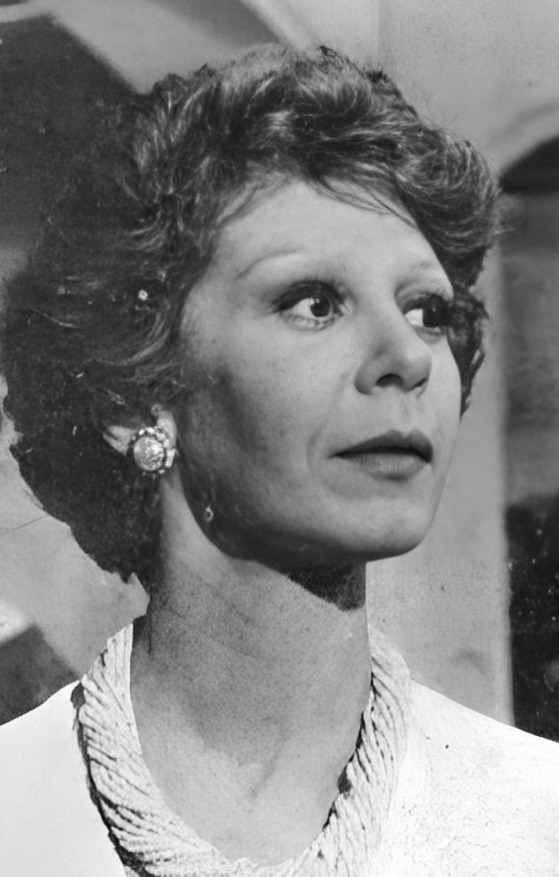


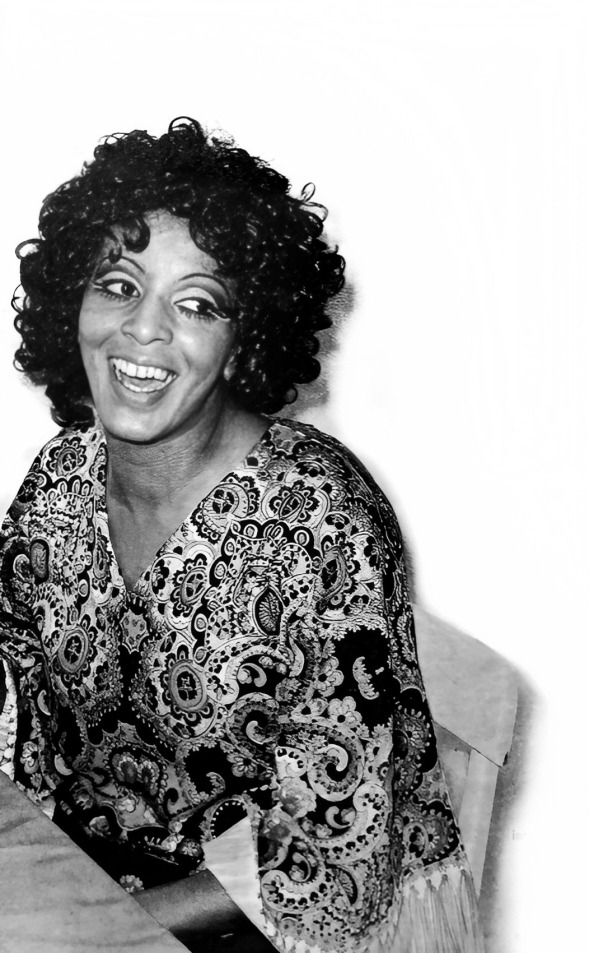

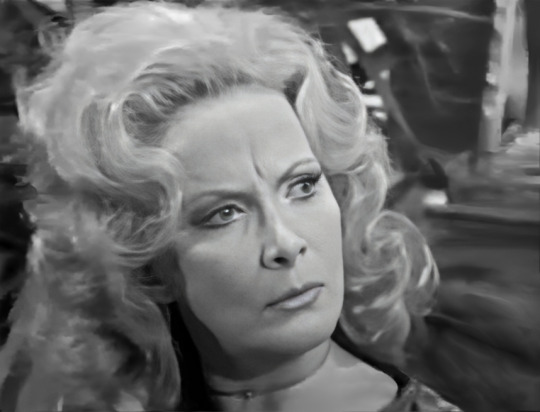





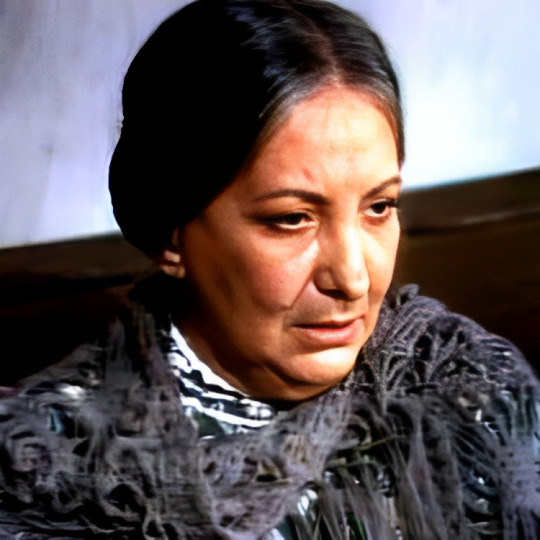



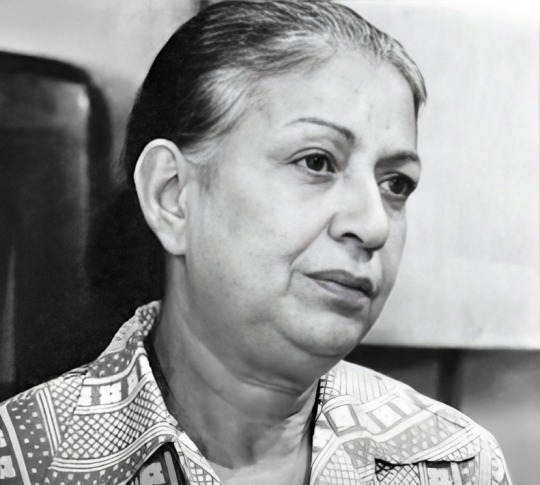




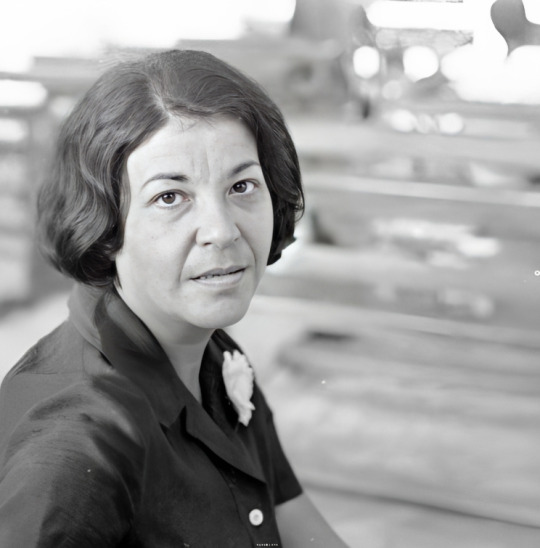
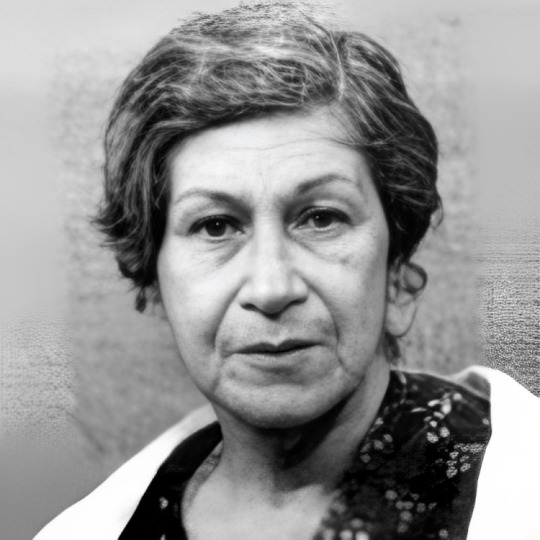

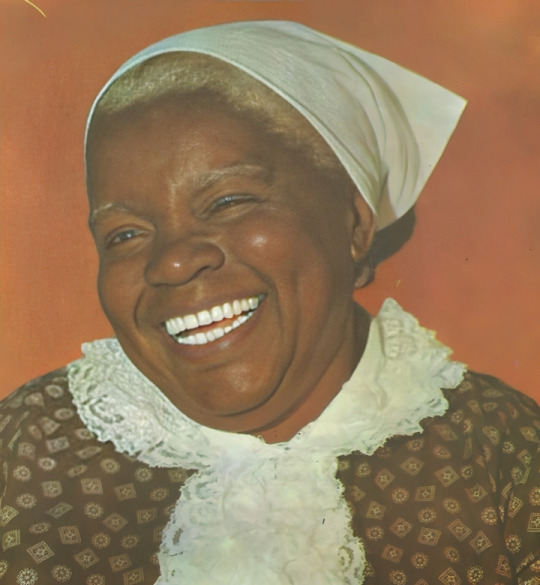
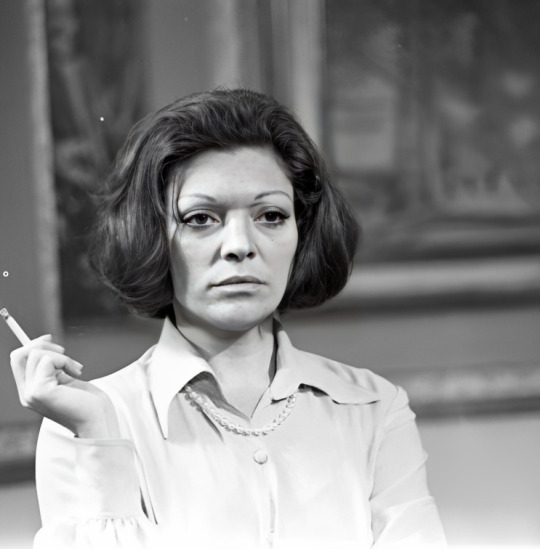
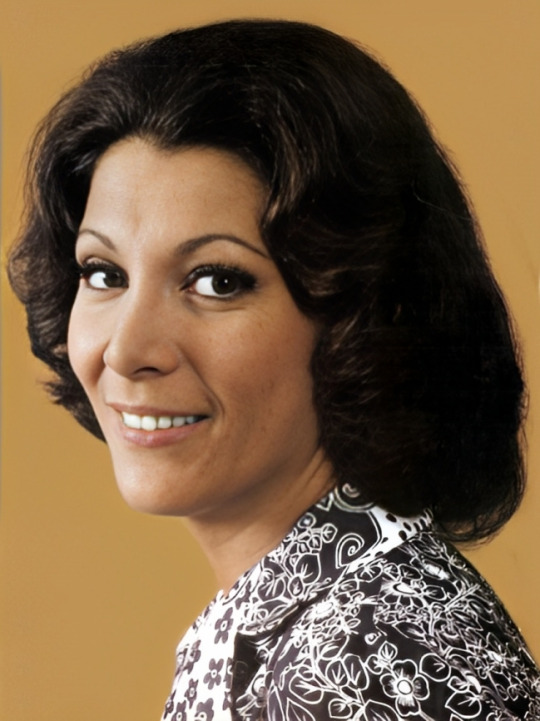


30 grandes atrizes brasileiras, raramente lembradas hoje:
Flora Geny
2. Bárbara Fazio
3. Isabel Teresa
4. Ileana Kwasinski
5. Joséphine Hélene
6. Jacyra Silva
7. Carmem Marinho
8. Carminha Brandão
9. Léa Camargo
10. Lúcia Lambertini
11. Iracema de Alencar
12. Maria Aparecida Baxter
13. Maria Vidal
14. Gilda Sarmento
15. Dina Lisboa
16. Norah Fontes
17. Wilma de Aguiar
18. Lourdes Mayer
19. Wanda Kosmo
20. Yolanda Cardoso
21. Suzy Arruda
22. Riva Nimitz
23. Ana Ariel
24. Yara Salles
25. Antônia Marzullo
26. Isaura Bruno
27. Maria Luiza Castelli
28. Maria Estela
29. Carmen Monegal
30. Isolda Cresta
Aplausos!
#flora geny#barbara fazio#isabel teresa#ileana kwasinski#josephine helene#jacyra silva#carmem marinho#carminha brandao#lea camargo#lucia lambertini#iracema de alencar#maria aparecida baxter#maria vidal#gilda sarmento#dina lisboa#norah fontes#wilma de aguiar#lourdes mayer#wanda kosmo#yolanda cardoso#suzy arruda#riva nimitz#ana ariel#yara salles#antonia marzullo#isaura bruno#maria luiza castelli#maria estela#carmen monegal#isolda cresta
2 notes
·
View notes
Link
This week on Hairy Butthole I talk to my long-time friend Helen Cho. Helen is a celebrated producer. After four years she finally breaks her silence on the death of her beloved friend Anthony Bourdain. We also talk about grieving the loss of Christina Yuna Lee as strangers, not feeling entitled to expressing grief, and feeling like our expressions of grief are inadequate or inappropriate constantly. Then we laugh about me wanting to kill myself.
#Hairy Butthole: I'm Going To Kill Myself#podcast#podcasts#Helen Cho#Anthony Bourdain#Christina Yuna Lee#youngmi mayer
1 note
·
View note
Text
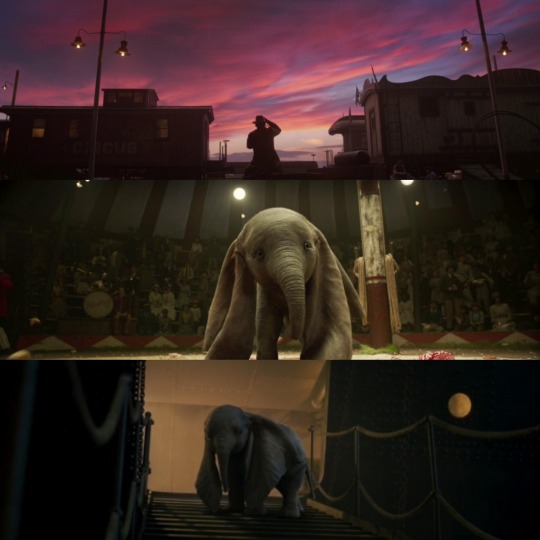
Dumbo (2019, Tim Burton)
06/04/2024
Dumbo is a 2019 film directed by Tim Burton.
USA, 1919. Holt Farrier, a former star of the Medici circus, returns from World War I to start a new life with his children Milly and Joe. Unfortunately, when Holt returns home, he finds his life turned upside down: a widower, he lost an arm during the war and consequently will never be able to do his circus stunts with his horses again. Max Medici, the director of the circus, then gives him another task: to take care of the new circus animal, an Indian elephant.
Milly and Joe visit the puppy, who they decided to call Dumbo, a name previously given to him by the circus spectators for mocking purposes, and discover that he has the ability to fly thanks to a feather; they therefore decide to exploit his talent to help the circus, now in a serious situation.
The next evening the circus puts on another show in Missouri and Dumbo makes his first appearance as a flying elephant after getting stuck on a burning building. The little elephant's performance causes a sensation throughout the country and begins to be on everyone's lips, including that of V. A. Vandevere, a powerful entrepreneur, and Colette Marchant, a French trapeze artist, who go to Medici and invite him and his circus at Dreamland, a park built by Vandevere full of rides and entertainment.
Dumbo, tired of life in the circus, decides to say goodbye to his new friends and moves with his mother to the jungle.
On July 8, 2014, Walt Disney Pictures announced the live action remake of Dumbo, together with the name of the screenwriter Ehren Kruger. On March 10, 2015, Tim Burton was announced as the film's director.
The film's budget was $170 million.
In January 2017, it was announced that Will Smith was in talks to play the father of the children who develop a friendship with the baby elephant Dumbo after seeing him in the circus, but later turned down the offer due to of the filming of the sequel to the film Bad Boys II, and other reasons. Bill Hader, Chris Pine and Casey Affleck were also offered the role, but turned it down before Colin Farrell was cast.
#Dumbo#film#2019#tim burton#Film adaptation#Helen Aberson Mayer#Harold Pearl#Remake#live action#animation#1941#united states#1919#World War I#horse#asian elephant#Dumbo Jumbo#missouri#Trapezista#Tropical rainforest#walt disney pictures#ehren kruger#budget#United States dollar#2017#will smith#bad boys ii#bill hader#chris pine#casey affleck
0 notes
Text















pjo/hoo/toa + the cycle
The Lightning Thief / Growing Sideways, Noah Kahan / Ivan the Terrible and His Son Ivan, Ilya Repin + Saturn Devouring His Son, Goya + Saturn, Rubens / The Blood of Olympus / The Family Jewels, MARINA / The Last Olympian / The Sea of Monsters / The Family Jewels / Orestes Pursued by the Furies, Bouguereau / The Hidden Oracle / Apollo and Marsyas, Manfredi / In The Blood, John Mayer / The Sea of Monsters / The Combat of Ares and Athena, Jacques Louis David / The Family Jewels / Mark of Athena / The Combat of Ares and Athena / The Lightning Thief / Family Line, Conan Gray / Cronos and Rhea, Schinkel / The Lightning Thief / The Blood of Olympus / In The Blood / The Last Olympian / Chronos and His Child, Romanelli / Desireé Dellagiacomo / The Lightning Thief / Family Line / The Fallen Angel, Alexandre Cabanel + The Last Day of Pompeii, Bryullov / The Blood of Olympus / The Outcast, Botticelli / Glass, Irony and God, Anna Carson / House of Hades / Family Line / The Last Olympian / The Lament for Icarus, Herbert Draper + Sacrifice of Iphigenia, Roman School + Minerva and Arachne, Houasse + Venus Induces Helen to Fall in Love with Paris, Kauffmann / The Last Olympian / Hadestown / The Lightning Thief / apple, Charli xcx / The Last Olympian / I Would Leave Me If I Could, Halsey / The Sea of Monsters / ? / LET YOUR DAD DIE ENERGY DRINK, Lavery and Corrigan / The Last Olympian / Eat Your Young, Hozier / The Last Olympian / Orpheus and the Bacchantes, Lazzarini / The Blood of Olympus / Susan Smith, wych elm / Orpheus and the Bacchantes / The Burning Maze / ? / The Tyrant’s Tomb / Perseus Freeing Andromeda, Veronese / Abduction of Psyche, Bouguereau + Bacchus and Ariadne, Van Loo / The Tower of Nero / The Tower of Nero / The Tower of Nero
#I didn’t put the cycle ends here picture because I think this whole ww implies it (also it’s overused and I already had too many overused#quotes here)#but fun fact for those interested: the four paintings are meant to represent horrible things the gods have done such as Iphigenia’s#sacrifice demanded by Artemis and Aphrodite essentially starting the war of Troy#The Bacchantes painting was bc I couldn’t find a painting of this one story where a mother participates in the worship of Dionysus and ends#up killing her own son which you know. That’s the cycle etc etc#and the of course Perseus & Andromeda (the one hero that was happy) and Cupid & Psyche and Dionysus & Ariadne (which are considered to be#happy endings for two Greek lovers)#enough yapping#web weaving#pjo hoo toa#lester papadopoulos#percy jackson#annabeth chase#jason grace#luke castellan#frank zhang#hazel levesque#reyna ramirez arellano#clarisse la rue#trials of apollo#percy jackon and the olympians
937 notes
·
View notes
Text
Thinking about the three Jewish female fencing Olympic medalists who won gold, bronze and silver at the 1936 "Nazi" Olympics in Berlin. Thinking about how they proved Jews, including Jewish women, can defy all prejudiced expectations, and kick ass.

Left to right: gold to bronze medals at fencing at the 1936 Olympics
Thinking about how Helene Mayer, the silver medalist, was used by the Nazis to dismiss accusations of antisemitism, using her as a token Jew, by threatening the life of her family. Thinking about how dangerous, vile and antisemitic it is to tokenize Jews, a lesson that 2020's Tumblr has yet to learn.
Thinking about how Ellen Müller-Preis, the bronze medalist, wanted to compete in the 1932 Olympics for her birth country, Germany, a year before the Nazis came to power, but she wasn't allowed to for being Jewish. She won gold at those Olympic games while representing Austria, angering the same German Olympic committee that had rejected her. Thinking about how antisemitism means Jews are damned if they do, dammed if they don't, and damned into don't.
Thinking about how Ilona Elek-Schacherer, the gold medalist, won more international fencing titles than any woman in history to this day. Thinking about how the Nazis' "master race" couldn't outdo the "subhuman" Jew, but they did genocide us. Thinking about Nazis and Hamasniks, about what it says regarding them, that they feel they have to exterminate us and no other option will do.
#olympics#jumblr#jew#jews#jewish history#antisemitism#frumblr#israel#israeli#israel news#israel under attack#israel under fire#israelunderattack#terrorism#anti terrorism#hamas#antisemitic#antisemites#judaism#jewish
461 notes
·
View notes
Text

AUGUST 5, 2024
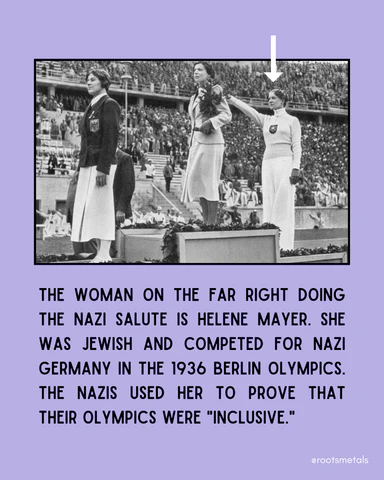
TOKENISM
Tokenism is the practice of selecting a person from a minority group to give the illusion of diversity or of representation of the minority group’s opinion. Tokenism is racism — or in this case, antisemitism — because it weaponizes the identity of the marginalized person to justify things that hurt that very same marginalized group.
In other words, when you tokenize someone, you’re using them in a way that ultimately will hurt them or the group they are affiliated with.
BECAUSE I KNOW I WILL BE ASKED…
I often highlight the voices of Palestinian dissidents, anti-Hamas Palestinians, and of Palestinians seeking to make peace with Israel. People tend to ask me a very good question: how is this any different than “tokenizing” fringe Jews?
Firstly, I want to make it clear that when I highlight the voices of “fringe” Palestinians, I am in no way claiming that they are necessarily representative of the majority. The overwhelming majority of past and recent surveys and statistics I’ve seen unfortunately suggest otherwise.
Secondly, there is a major, major difference between tokenizing the voices of Jews who minimize antisemitism, both in the Diaspora and in Israel, and uplifting the voices of Palestinians who seek to make peace. Tokenizing Jews who dismiss left-wing or Islamist antisemitism or who believe Israeli Jews are fair targets endanger the rest of us. That’s a far cry from Palestinians who wish to live side by side in peace.
Most importantly, the overwhelming majority of Jews worldwide have all the freedom of speech in the world. They are not risking their lives by sharing their views. Palestinian dissidents in the West Bank and especially in the Gaza Strip are quite literally putting their necks on the line to speak out against their tyrannical leaders. To not understand the difference between this and a Jew living comfortably in Brooklyn is a sign of privilege, of not understanding authoritarian societies. When dissidents speak, whether in Iran or the Palestinian Territories, I believe it’s the duty of the people in the free world to uplift their voices.
SELF-TOKENISM: ASSOCIATION OF GERMAN NATIONAL JEWS
In the earliest days of Hitler’s rule, there was a small group of Jews that supported Hitler. In 1921, a Jewish man named Max Naumann founded a group known as the “Association of German National Jews.”
Following Hitler’s rise to power, the Nazi regime itself never tokenized the Association of German National Jews, but the members of the organization tokenized themselves, particularly when speaking to the press. In 1933, a member of the group, Hans Priwin, issued a statement alleging that reports of the Nazis’ mistreatment of Jews were “stupid lies.” In 1934, the Association issued a statement of support for Hitler.
The Association of German National Jews was especially hostile to the less assimilated Jews from Eastern Europe, who they considered backwards and “racially and spiritually inferior.” They were also hostile to Zionists, as they believed that they were a threat to Jewish integration into wider society. The main goal of the Association of German National Jews was the self-eradication of Jewish identity. To accomplish this sinister motive, they weaponized — and tokenized — their own Jewish identities.
After Hitler’s appointment as German Chancellor in 1933, Jews worldwide protested, boycotting German goods. Instead of supporting the protest, the Association came out against the boycott and issued a manifesto that the Jews in Germany were being “fairly treated.”
In 1935, the Nazis declared the Association of German National Jews illegal and dissolved it. Naumann was arrested by the Gestapo the same day.
TOKENISM: HELENE MAYER
German Jewish fencer Helene Mayer is considered one of the best fencers of all time, having won gold at the 1928 Amsterdam Olympics and placing fifth at the 1932 Los Angeles Games. After Los Angeles, Meyer stayed in California to earn a law degree. In 1933, Adolf Hitler rose to power in Germany, stripping Mayer, who was then banned from her old fencing club, of her rights.
Leading up to the 1936 Berlin Olympics, the United States Olympic Committee was under tremendous pressure to boycott the Games. The head of the US Olympic Committee, Avery Brundage, was a Nazi sympathizer, who convinced Germany to allow one German Jewish athlete to compete to give the impression that Jews in Germany were being treated fairly. In other words, the Nazis needed a token Jew.
Enter: Helene Mayer. Mayer had been living in the United States since her expulsion from her fencing club. Desperate to reclaim her old Olympic glory, Mayer tried out and was selected for the German team. She placed second and gave the Hitler salute on the podium.
After the Olympics, where the Nazi press and government ignored her, Mayer returned to the United States, thus saving herself from the Holocaust. She moved back to Germany in 1952 and died a year later. She never publicly addressed her decision to participate as an athlete under the Nazis, a decision which temporarily sanitized Nazi Germany’s image.
TOKENISM: YEVSEKTSIYA
In 1918, the Soviet Communist Party established a “Jewish branch,” with the consent of Vladimir Lenin. It was named “Yevsektsiya,” meaning “Jewish Sections of the Communist Party.” The mission of the Yevsektsiya was, quite literally, the “destruction of traditional Jewish life, the Zionist movement, and Hebrew culture.”
From the outset, the Yevsektsiya began harassing Zionist Jews. Initially, the Yevsektsiya legally abolished the “kehillas,” the traditional Jewish community organizations. Sometimes, they even burned their offices down. They shut down everything from Jewish political groups to theaters to sports clubs. They raided all Ukrainian “Zionist” offices and arrested every single one of their leaders.
Until their dissolution in 1929, they imprisoned, tortured, and murdered thousands of Jews. The fact that the Yevsektsiya was “Jewish” was central to its purpose. After all, the Soviet regime couldn’t be accused of antisemitism when those shutting down all Jewish cultural and spiritual life were Jews themselves. In other words, the Soviets tokenized the Jewish identities of the Yevsektsiya members to legitimize their systematic persecution of Jews.
According to historian of Soviet history Richard Pipes, “In time, every Jewish cultural and social organization came under assault.”
The Soviet government dissolved the Yevsetskiya in 1929, claiming that it was no longer needed. During Stalin’s Great Purge in the 1930s, virtually all its members were arrested and executed. Some were shot by bullet, some were tortured, and others were sentenced to hard labor in Siberia. A former member even died when the prison he was in refused to supply him with insulin.
TODAY
NETUREI KARTA
Antisemites today continue to uplift fringe Jewish groups to deflect from accusations of antisemitism. The Neturei Karta, for example, are a staple at pro-Palestine protests, despite the fact that they share just about zero values with the progressive left, given their sexism and homophobia, among other things. Their membership does not surpass 5000 people, and they are considered so fringe that even other anti-Zionist Orthodox groups, such as the Satmar, have disavowed them, issuing a cherem (censure, similar to excommunication) against them. The Neturei Karta have friendly relations with the Islamic Republic in Iran and even attended a conference in Holocaust denial in Tehran.
JEWISH VOICE FOR PEACE, IFNOTNOW
Surveys consistently show that between 80-95 percent of Jews support the existence of the State of Israel. Yet politicians and activists often uplift anti-Zionist Jewish groups such as Jewish Voice for Peace and IfNotNow as though they are representative of “true” Judaism. These groups have a long history of regurgitating the propaganda and glorifying, excusing, or justifying the actions of terrorists and terrorist groups responsible for heinous attacks against Jews around the world, including October 7.
HOW NOT TO TOKENIZE JEWS
#1 Before you amplify a Jewish person, pause to think: is there anything in it for you? Are you amplifying us because you care about what we have to say or because our words validate your pre-existing opinions?
#2 Some discussions are intracommunity discussions. You don’t need to speak for us, over us, or weaponize intracommunity discussions to demonize the Jews you dislike.
#3 You cannot adequately support Jewish people if you are not open to hearing about our experiences, even when they don’t align with yours.
#4 Listen to many Jewish voices, and not just voices that you always agree with. It’s also important to listen to Jews of diverse backgrounds, races, sub-ethnic groups, social classes, genders, sexual orientations, and more.
This also means that if you disagree with a person about a topic unrelated to Jewishness or Judaism, you should still be willing to listen when they talk about their Jewish experience. People — Jews included — are multifaceted individuals. You might not always agree with us, but you should understand that no one can speak to the Jewish experience better than we can.
#5 No Jew — not a single one — deserves antisemitism. Antisemitism is not a valid punishment for bad behavior; it’s an ancient, senseless form of hatred that has gotten innocent people murdered for thousands of years. All Jews deserve protection from antisemitism, no matter how good or bad their views and/or behavior. Additionally, antisemitism targeting Jews you dislike always spills over and hurts other Jews. If you do not pursue safety for every single Jew, you are not an ally.
#6 To adequately represent the views of the Jewish community, share the views that are representative of the majority of the Jewish community, not fringe opinions. Don’t uplift a minority voice to pretend that that’s how all of us feel.
#7 Understand that Jews can very much perpetuate antisemitism. Agreeing with a Jewish person doesn’t mean you are not antisemitic.
rootsmetals
Olympics x As a Jew crossover
Sources
261 notes
·
View notes
Text

Helen Mayer, two time Olympic Fencing Champion
John Gutmann, 1935
338 notes
·
View notes
Photo

Imogen Cunningham
HELENE MAYER, CANYON DE CHELLY 8, 1939
Imogen Cunningham Trust
2K notes
·
View notes
Text
appreciation post for Lise Mayer!! she co-wrote The Young Ones (and The Bachelor Boys book, additional material like when they did Comic Relief, etc), which is well known. but she also wrote for other things in the alternative comedy scene like Rik Mayall and Ben Elton's comedy tour (source: BBC Breakfast Time interview)! and, something I didn't know until recently: she co-wrote/wrote for Kevin Turvey! she's not credited in his television appearances, but see below for sources.
i really loved the podcast episode she did with Alexei Sayle about TYO, you gain a lot of insight into her perspective! she also mentions misogynistic treatment like being asked to go make tea when they were doing script readings, not getting invited to a big BBC party because it was presumed she'd be Rik's plus-one, and getting groped at the BBC bar. it pissed me off on her behalf and partly prompted this post.






some specific accolades/accreditation/fun facts:
Rik crediting her with writing/conceiving the Kevin Turvey non-joke "All right, biting political satire: What do Lech Walesea and Menachem Begin have in common? They’ve both got foreign names! What do you mean it’s not funny?" (x)
Alexei Sayle in Thatcher Stole My Trousers crediting Lise with co-writing Turvey: "Lise was, like Linda for mine, a vital part of Rik’s career, co-writing both The Young Ones and Rik’s character Kevin Turvey..."
a 1987 source for Lise co-writing Turvey: "The assumption that women do not write comedy scripts was one with which Lise Mayer, co-writer of The Young Ones television series, has also had to contend. She started writing for Rik Mayall’s Kevin Turvey in the television series A Kick Up the Eighties..." (x)
Rowland Rivron (comedian who toured with The Comic Strip gang and lived with Rik and Lise) in What the f*** did I do last night?: "[Lise] also had the unenviable job of standing at the side of the stage when Rik was performing, and jotting down anything he said that was unscripted. If it got a laugh, it would be woven into the next night’s routine."
the only time i've ever seen a Rik Mayall/Ade Edmondson/Lise Mayer writing credit: for a poem called Distance which was collected in this anthology! Rik and Ade seem to have acted it out (or at least a version of it) in this 20th Century Coyote performance
Rik on Lise writing TYO: "‘She discovers different things: the comedy of embarrassment and awkwardness – she draws out the cheating and stealing that goes on in the house.’" (x) (Lise also says her "favorite comedy was always the comedy of embarrassment" in the Alexei Sayle podcast)
Rik: "... Lise Mayer wrote this great scene where I find a tampon in a handbag and it's my birthday party and I think it's a present because my character is Rick, who is such a git, he didn't know." (x)
Helen Lederer in Not That I'm Bitter, writing about being on The Young Ones: "[Lise] was known to be the brains behind it all, particularly the more surreal elements…"
she and Rik chose the bands (x)
Lise: “We’d have a table read at which point we’d discover that the script ran over an hour long, and then I’d have a sleepless night editing it.” Alexei: “You did that?” Lise: “Usually me, yeah…” (she later explains they'd present the script Monday and rehearsals were Tuesday, Wednesday-so she literally had one night to edit!) (x)
facts from the blu-ray commentary tracks:
Rick's yellow dungarees in Interesting were based off a picture of Lise in a similar pair
Lise wrote an essay about the tampon joke in Interesting so that the BBC didn't cut the scene (though they still edited it)
Paul Jackson (producer) credits Lise with arguing "you are seriously telling me that we cannot refer on television to something that happens to 50% of the population for about 30 years of their life? and we're not allowed to even refer to it" to make an executive back off about the tampon joke in a meeting
Lise came up with Neil's flowerpot covering in Nasty
Vyvyan/Vivian's name comes from Lise having lived in Vyvyan Terrace, Bristol
Lise thought of the cast switching costumes in Bambi (one of my favorite moments!!) (/end of commentary track facts)
this is guesswork, but i've seen Ben Elton and Rik Mayall's handwriting and i'm pretty sure the editing/handwriting on the bottom left on this script must be Lise's, which gives insight into what/how she wrote: (x)

i feel like it's easy for people to overlook or minimize Lise's impact, something that happens to female creators far too often. i hate when women's identities are framed around their association to a man-girlfriend to Rik in this case-which was the norm whenever i saw Lise discussed in articles/books/online discussions about TYO. it's important to know she was a writer and co-creator with her own identity and (underappreciated) contributions. The Young Ones (and Kevin Turvey, and things we don't even know she goes uncredited for) would not have been the same—or wouldn't have even existed—without her!
#women in comedy are everything to me. lise was the one who did the typing to amalgamate the TYO scripts AND edited them down in 1 night...#women have to work so hard to prove their place in male dominated fields. she deserves her flowers!!#lise mayer#rik mayall#the young ones#kevin turvey#ben elton#britcom#in berserker! ade says vyvyan is named that because he and rik loved Vivian Stanshall#so i imagine lise gave the spelling? which is quite important i would say! just interesting to know the Full picture#also i reallyyy wanna know when Distance was actually written. it was collected in an anthology pubished in '84#but it very well couldve been written before (as other works in that book were written before 1984 as well)#basically im wondering if Lise contributed to 20th century coyote sketches?? i wouldnt be surprised bc she wrote a lot for rik
79 notes
·
View notes
Text

Imogen Cunningham. Helene Mayer, Canyon de Chelly 8, 1939.
169 notes
·
View notes
Text
ENCONTRE UM AUTOR:
Envie sugestões.
Leia uma citação no modo aleatório.
Autores Desconhecidos
Adélia Prado
Adrian Tchaikovsky
Affonso Romano de Sant’anna
Alain de Botton
Albert Einstein
Aldous Huxley
Alexander Pushkin
Amanda Gorman
Anaïs Nin
Andy Warhol
Andy Wootea
Anna Quindlen
Anne Frank
Antoine de Saint-Exupéry
Aristóteles
Arnaldo Jabor
Arthur Schopenhauer
Augusto Cury
Ben Howard
Benjamin Alire Sáenz
Benjamin Rush
Bill Keane
Bob Dylan
Brigitte Nicole
C. JoyBell C.
C.S. Lewis
Carl Jung
Carlos Drummond de Andrade
Carlos Fuentes
Carol Ann Duffy
Carol Rifka Brunt
Carolina Maria de Jesus
Caroline Kennedy
Cassandra Clare
Cecelia Ahern
Cecília Meireles
Cesare Pavese
Charles Baudelaire
Charles Chaplin
Charlotte Nsingi
Cheryl Strayed
Clarice Lispector
Claude Debussy
Coco Chanel
Connor Franta
Coolleen Hoover
Cora Coralina
Czesław Miłosz
Dale Carnegie
David Hume
Deborah Levy
Djuna Barnes
Dmitri Shostakovich
Douglas Coupland
Dream Hampton
E. E. Cummings
E. Grin
E. Lockhart
EA Bucchianeri
Edith Wharton
Ekta Somera
Elbert Hubbard
Elizabeth Acevedo
Elizabeth Strout
Emile Coue
Emily Brontë
Ernest Hemingway
Esther Hicks
Faraaz Kazi
Farah Gabdon
Fernando Pessoa
Fiódor Dostoiévski
Florbela Espanca
Franz Kafka
Frédéric Chopin
Fredrik Backman
Friedrich Nietzsche
Galileu Galilei
Georg Wilhelm Friedrich Hegel
George Orwell
Hafiz
Hanif Abdurraqib
Helen Oyeyemi
Henry Miller
Henry Rollins
Hilda Hilst
Iain Thomas
Immanuel Kant
Jacki Joyner-Kersee
James Baldwin
James Patterson
Jane Austen
Jean Jacques Rousseau
Jean Rhys
Jean-Paul Sartre
Jeremy Hammond
JK Rowling
João Guimarães Rosa
Joe Brock
Johannes Brahms
John Banville
John C. Maxwell
John Green
John Wooden
Jojo Moyes
Jorge Amado
José Leite Lopes
Joy Harjo
Juan Ramón Jiménez
Juansen Dizon
Katrina Mayer
Kurt Cobain
L.J. Smith
L.M. Montgomery
Leo Tolstoy
Lisa Kleypas
Lord Byron
Lord Huron
Louise Glück
Lucille Clifton
Ludwig van Beethoven
Lya Luft
Machado de Assis
Maggi Myers
Mahmoud Darwish
Manila Luzon
Manuel Bandeira
Marcel Proust
Margaret Mead
Marina Abramović
Mario Quintana
Mark Yakich
Marla de Queiroz
Martha Medeiros
Martin Luther King
Mary Oliver
Mattia
Maya Angelou
Mehdi Akhavan-Sales
Melissa Cox
Michaela Chung
Miguel de Cervantes Saavedra
Mitch Albom
N.K. Jemisin
Neal Shusterman
Neil Gaiman
Nicholas Sparks
Nietzsche
Nikita Gill
Nora Roberts
Ocean Vuong
Osho
Pablo Neruda
Patrick Rothfuss
Patti Smith
Paulo Coelho
Paulo Leminski
Perina
Peter Ilyich Tchaikovsky
Phil Good
Pierre Ronsard
Platão
Poe
R.M. Drake
Raamai
Rabindranath Tagore
Rachel de Queiroz
Ralph Emerson
Raymond Chandler
René Descartes
Reyna Biddy
Richard Kadrey
Richard Wagner
Ritu Ghatourey
Roald Dahl
Robert Schumann
Roy T. Bennett
Rumi
Ruth Rendell
Sage Francis
Séneca
Sérgio Vaz
Shirley Jackson
Sigmund Freud
Simone de Beauvoir
Spike Jonze
Stars Go Dim
Steve Jobs
Stephen Chbosky
Stevie Nicks
Sumaiya
Susan Gale
Sydney J. Harris
Sylvester McNutt
Sylvia Plath
Sysanna Kaysen
Ted Chiang
Thomas Keneally
Thomas Mann
Truman Capote
Tyler Knott Gregson
Veronica Roth
Victor Hugo
Vincent van Gogh
Virgílio Ferreira
Virginia Woolf
Vladimir Nabokov
Voltaire
Wale Ayinla
Warsan Shire
William C. Hannan
William Shakespeare
Wolfgang Amadeus Mozart
Yasmin Mogahed
Yoke Lore
Yoko Ogawa
203 notes
·
View notes
Note
Other than leper king and his heirs which book would you recommend for research on Baldwin iv of Jerusalem?
All right then, buckle up for some nerdery! 😁
I will preface this by saying that I am not a total expert on Baldwin and haven't done a colossal amount of research specifically on him. I could chew your ear off prattling on about the general world of the crusader kingdoms, their politics, and about Raymond III of Tripoli and Sibylla of Jerusalem in particular, but Baldwin isn't my main interest here. Also, as far as I know, Hamilton's study is the only longer academic work centred solely around Baldwin. Hence, in order to learn more about your fav and the world he lived in, I'd recommend reading a little more broadly. Being a king, he is featured (at least in some capacity) in most publications that deal with the Latin kingdoms in the latter half of the 12th century.

That said, have a list:
Piers D. Mitchell: "Leprosy and the Case of King Baldwin IV of Jerusalem: Microbacterial Disease in the Crusader States of the 12th and 13th Centuries", International Journal of Leprosy, vol. 61, no. 2, 1993, pp. 283-91. Pretty self-explanatory. You can find this article on the internet; Mitchell also has a few other publications that deal with medicine in the crusader states, so you might find some additional Baldwin stuff there as well.
Elma Brenner: "Recent Perspectives on Leprosy in Medieval Western Europe", History Compass, vol. 8, no. 5, 2010, pp. 388-406. Has a little bit on Baldwin, might be useful if you want to find out more about how the disease was regarded by his contemporaries.
Helen J. Nicholson: Sybil, Queen of Jerusalem, 1186-1190. Routledge, 2022. This is a really good and really recent one that I was lucky enough to find in my uni library. Of course Sibylla-centred, but gives a good overview of the politics in Outremer and of course has passages about Baldwin in it. Also look into some of Nicholson's other publications if you're interested in the role of women in the context of crusading.
Kevin James Lewis: The Counts of Tripoli and Lebanon in the Twelfth Century: Sons of Saint Gilles. Routledge, 2017. Obviously mostly a Raymond-centric source, but it is also relatively recent and has a good chunk on Baldwin in the chapter where Lewis talks about Raymond's time as Baldwin's regent.
Joshua Prawer: Crusader Institutions. Oxford University Press, 1980. More politics to be found here, but very well put together. Prawer was an extremely prolific scholar where the history of the Latin East and the crusades was concerned, so - once again: if you're interested, look up his other works.
Jonathan Riley-Smith: The Oxford Illustrated History of the Crusades, Oxford University Press, 1997. Good overview that goes into detail about the mentality among crusaders and aspects of daily life. Again, Riley-Smith is one of the authorities in the field, so looking into his bibliography might be worth a shot.
If you're into military history, the works of Benjamin Z. Kedar, John France - or, if you want something more dated, R.C. Smail - might be of interest to you. They mostly cover general points of Frankish and Muslim warfare or the Battle of Hattin in particular (other than in Hamilton or in some of the primary sources from the crusader period, I've never come across an article on the Battle of Montgisard), but might be helpful if you want to get a feel for what life was like at the time.
Hans-Eberhard Mayer is also definitely worth a look as a scholar, even though his works are a bit older now. However, I'm not sure how much of his stuff you can find in translation - I've only read him in German.
For the physical setting of crusader-period Jerusalem and the material culture, I very heartily recommend two works written or edited by Adrian J. Boas: Jerusalem in the Time of the Crusades: Society, Landscape and Art in the Holy City under Frankish Rule (Routledge, 2001) and The Crusader World (Routledge, 2016). I consult both of these frequently for world-building in my fic writing.
If you want something on the general concept of the knight / chivalry, Maurice Keen's Chivalry (Yale University Press, 2005) might be a good start. For a detailed analysis of medieval courtly culture, I recommend Joachim Bumke's Courtly Culture: Literature and Society in the High Middle Ages (2000, English translation by Thomas Dunlap). That thing was invaluable when I was writing my BA thesis. And if you'd like to know more about the literary life of the crusaders, there is a recent publication called Literature of the Crusades (Cambridge University Press, 2019) edited by Simon Parsons and Linda M. Paterson that I also found rather good.
For fashion: The various Osprey Military History books are a good choice if you want visual representations of knightly dress. There's also a collection of essays called Encountering Medieval Textiles and Dress: Objects, Texts, Images (Palgrave Macmillan, 2002) edited by Désirée Koslin and Janet Snyder, which is one of the better ones I've found, as most books about medieval fashion focus mostly on later centuries. This one might be a bit hard to get through, though, if you don't have some kind of background knowledge about medieval texts or architecture.
If you want something less strictly academic and more in the vein of popular history, you might want to try James Reston's Warriors of God (2002) or the much more dated but rather fanboy-ish The Crusades: A History (also sometimes titled The Dream and The Tomb) by Robert Payne, which is very pro-Baldwin.
Other than that, I'll link you an older post about fictional depictions of Baldwin and other assorted good bois and girls from KoH. I hope this will scratch the Baldwin itch for you!
And: If anyone has more suggestions, of course do feel free to add them!
#asks#kingdom of heaven 2005#baldwin iv#sibylla of jerusalem#raymond iii of tripoli#balian of ibelin#crusades#snippets of actual history#book recommendations#i could add so many more books to that list lol#maybe i'll post a longer list of all the stuff i have read one day
154 notes
·
View notes